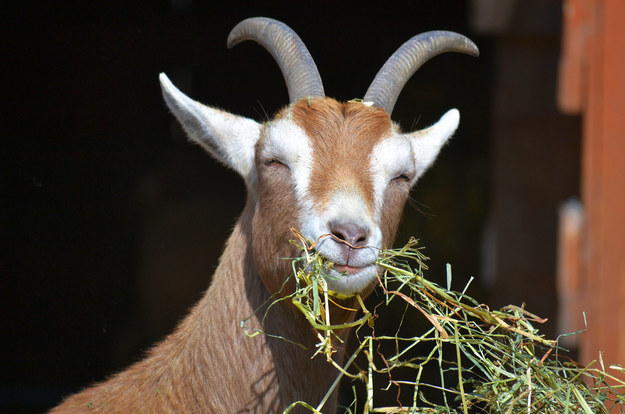Around 11,000 years ago, people started to farm which allowed people to settle in one place. Through observation of environmental change, people were able to domestic plants and animals. This led to an explosion in the population and the beginning of communities and civilization.
Wheat

Image: Holistic Healing News CC
Wheat takes up ⅙ of the worlds land. 600 million tons are produced annually. Wheat was originally found in just a tiny region in Western Asia. Humans unknowingly altered wheat’s dominant DNA, creating a whole new species. It is designed to survive in temperate climates and is the most adaptable out of all the domesticable crops. 41% of all calories consumed by humans across the globe comes from wheat.
Corn
Image: Vmcreddy CC
Corn was domesticated in Mesoamerica, specifically in Mexico. its ancestor, teosinte: an old form of corn. Teosinte is about the size of a human’s thumb, however the crop over the years found its way into the fertile soil of Peru, slowly evolving into the corn we know today. Corn is known throughout the entire world, having it become the most distributed food plant in the world, below wheat. In our modern world today, a form of corn can be found in nearly everything.
Rice

Image: Rice CC
Rice is a foundational part of people’s diets, not only in Asia but all over the world. Although rice was originally domesticated almost ten thousand years ago in China, it has since become the basis for agriculture around the world. Rice is a basic component of over half of the world’s population.
Pigs

Image:Ontario SPCA CC
Pigs were originally domesticated in China and in Papua New Guinea. Pigs have been farmed primarily because of their meat. They are the easiest to look after because similarly to humans, they are omnivorous and therefore it is easier to feed them. Contrary to popular belief, pigs are very clean animals; they roll around in the mud to cool themselves off due to the fact that they have no sweat glands. Pigs have been responsible for transferring diseases to humans.
Cattle
Image: Inhabitat CC
The modern cow descended from an animal that was native to Europe, Asia, and North Africa at the end of the Ice Age. The cow and the ox have made the greatest impact in the world. Cows are very versatile in the sense that they are used for many things. When cows are killed for meat, a lot can come out of it such as carcass that yields oil, fat, bone and twine and other useful materials. Their hides give us shoes, shelter and leather. Throughout their lifespans they provide milk that can be turned into cream, cheese, butter and yogurt. They can also pull heavy loads and carts and provide a lot of fertilizer.
Llamas
Image: Wikimedia CC
Llamas and Alpacas are both highly intelligent and gregarious, much like Camels. Both were domesticated by Native Americans about 5,000 years ago and were used for their wool, meat, dung, and hides. Llamas high tolerance to thirst, hunger and its wide variety
Horses

Image: Ingo Ronner Flickr Creative Common
Horses were they first domesticated in Asia, and it led to the establishment of the Eurasian Civilization. The horse was used in wars, and they were known for their power, strength, and speed. They were used to make chariots, and helped Europeans conquer land.
Goats

Image: Buzzfeed CC
Goats were found in Iran and domesticated nearly 10000 years ago. They are one of the oldest farmyard animals. They were domesticated primarily as a dairy animal. 1 to 2 goats can provide enough milk for an average family for a year. Humans may also use goats for food as their flesh is edible. A goat wool will be used for their linen in clothing. When on farms they tend to be placed with sheep. However while sheep’s tend to follow a leader, goats tend to wander off on their own.
PBS.org/gunsgermsteel/variables/
Ingredients and goldilocks conditions:
- Increases in human population
- Increasingly dense human communities
- Increasing competition for resources
- Forces foragers to find ways to increase production from their environments
- Warmer climates after the last ice age
- Enable the proliferation of plants and animals in many regions
- Domestication and artificial selection of plants and animals
- Boosts food productivity
↓
New complexity:
- Villages, cities, and agrarian civilizations
- Form larger, denser, and more diverse human communities with new, more complex social structures and organization
- Enable rapid acceleration in collective learning and its power for innovation
- Introduce a greater need to develop new technologies to further increase available energy supplies
